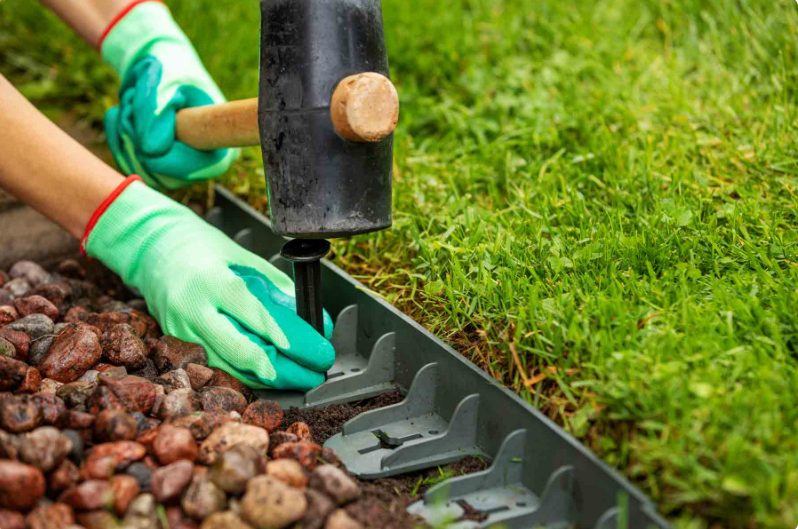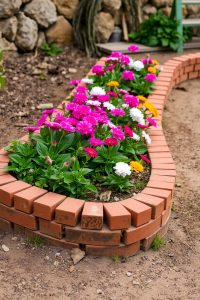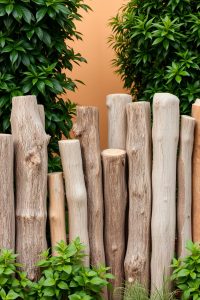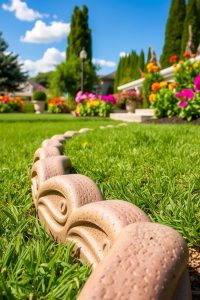
10 Budget-Friendly Garden Edging Ideas That Look Amazing

A beautiful garden doesn’t need expensive borders to stand out. With a little creativity and a few low-cost materials, you can give your garden a neat,
polished look without draining your wallet. Edging helps define flower beds, keep pathways tidy, and add charm to outdoor spaces.
From repurposed bricks to simple stone lines, the right border can pull your garden together in a stylish way.
Many homeowners already have useful items lying around, ready for a second life in the garden.
You just need the right ideas to turn everyday materials into eye-catching edges. This list features smart, easy-to-do edging solutions that anyone can use,
even on a tight budget. Whether your space is large or small, these ideas offer practical and attractive ways to upgrade your garden.
Take a look and get inspired to refresh your outdoor area with these low-cost edging options.
10 Low Cost Garden Edging Ideas
A garden edge helps keep things tidy. It separates plants from grass, gravel from soil, and adds shape to your yard. Many edging ideas can cost a lot.
But you don’t need to spend big money to get a neat and beautiful garden. With a few simple materials and a little time, you can build strong and nice-looking borders.
This list shares ten low-cost garden edging ideas. Each idea is easy to do and doesn’t require fancy tools.
You can reuse old items, buy cheap materials, or work with things already in your yard. Let’s go through these ideas one by one.
1. Brick Garden Edging

Old bricks make great edges. They last long, add color, and are easy to lay down. Place them in a line for a clean look. Set them at an angle or stack them for a raised border.
Bricks can go straight or curve around flower beds. They stop grass from growing into plant areas. Try digging a shallow trench first, then press each brick into the soil.
2. Stone Edging with River Rocks
Smooth river rocks make a natural garden border. They come in many sizes and colors. Gather them from a nearby creek or buy a bag from a garden store.
Line them up along your flower beds or paths. Use bigger rocks for a bold edge or small ones for a soft look. Add mulch or plants behind them for extra beauty.
3. Wood Log Edging

Short logs or thick branches create rustic garden edges. Cut them all the same length for a neat line. Or use logs in different heights for a wavy look.
Place them side by side in a trench. Make sure they stay upright by packing soil around them. Logs work best in dry spots.
Wet areas may cause the wood to rot over time.
4. Plastic Garden Edging Rolls
Plastic edging is cheap and flexible. You can bend it to fit curves or keep it straight. Most rolls come with small stakes to hold them in place.
Dig a narrow trench, insert the edge, and press the soil back. It gives a clean finish to lawns, beds, and paths. Choose black or brown plastic for a natural look.
5. Pallet Wood Borders
Old pallets give you free wood. Take them apart and cut the boards to your needed size. Sand sharp edges if needed. Then place the wood along your beds like fencing.
You can paint them or leave them natural. Nail them to short stakes for support. This idea adds a simple, homemade charm to your garden.
6. Concrete Edging Molds

Concrete molds let you make strong edges at home. Buy a reusable mold, mix some concrete, and pour it in. Let it set, then lift the mold and repeat.
These edges last for years. They stay in place and stop grass from spreading. You can choose different patterns and shapes.
Some molds even make the concrete look like bricks or stones.
7. Terracotta Pot Edging
Broken or full terracotta pots can line a bed nicely. Turn them on their side, press them into the soil, or stand them upright. They bring color and texture to the yard.
Use pots of one size for a clean line. Mix sizes for a casual feel. This type of edge works well with herbs, flowers, or cactus gardens.
8. Bottle Edging

Glass bottles make fun and colorful garden borders. Use wine, soda, or beer bottles. Clean them and bury the necks in the ground with the bottoms facing up.
Try green, brown, or clear glass. Mix colors or stick to one shade. Bottles can reflect sunlight and add sparkle to your yard. They also help keep weeds out of flower beds.
9. Gravel Strip Borders
A simple trench filled with gravel makes a clean edge. Use small stones, crushed granite, or pea gravel. This kind of edge stops grass and helps with drainage.
Lay down landscape fabric first. Then pour gravel into the trench. Keep it tidy with a flat shovel. This edge looks best along paths or raised beds.
10. Cinder Block Edging

Cinder blocks are cheap and easy to find. Lay them side by side for a basic edge. Use the holes to grow herbs or small flowers.
Stack two layers for a raised look. You can paint the blocks or leave them plain. This idea works well in veggie gardens or around compost areas.
FAQs
What is the cheapest way to edge a garden?
Using free or found materials like stones, logs, or old bricks is often the cheapest way. Pallet wood or glass bottles can also work without spending much.
How deep should garden edging go?
Most edging needs to go 3 to 6 inches into the ground. This helps keep it in place and blocks grass roots.
Do I need tools for edging?
Basic tools like a shovel, spade, hammer, or handsaw are enough for most ideas. Some edges like concrete or plastic rolls need a bit more work.
Can I make edging from things I already have?
Yes. Many items like old wood, broken pots, or extra bricks can become useful edges.
Does garden edging really help?
Yes. It keeps soil and mulch in place, stops grass from creeping in, and makes your yard look neat.
Conclusion
Garden edging doesn’t need to cost a lot. Many low-cost ideas can add style and order to your outdoor space. With a little effort, simple items like bricks, logs, or bottles can do the job well.
Pick an idea that matches your garden’s style. Whether you want neat lines or a fun look, there’s a budget-friendly option for you. Most of these ideas take just a weekend to finish. Try one and see how much cleaner and better your garden looks.
